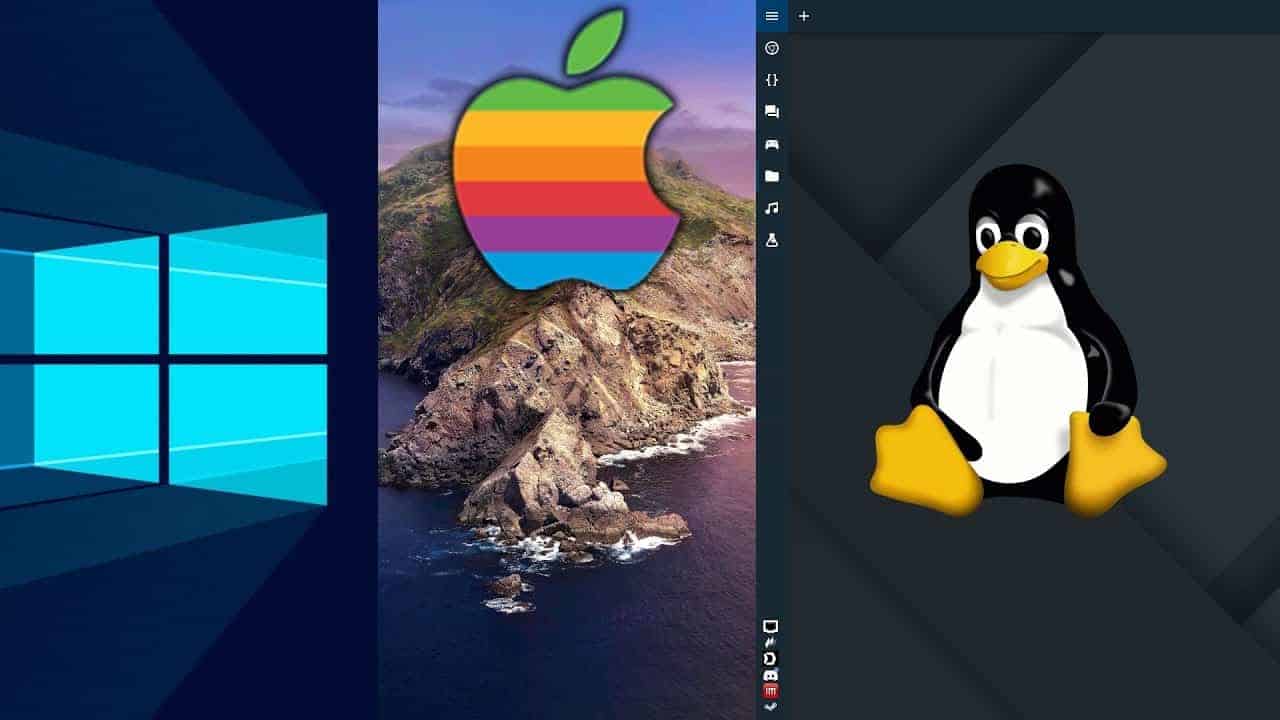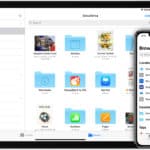An operating system is software that manages computer hardware, provides services for programs, and creates a user interface for interacting with the device. This essential software runs on computers, phones, and tablets, controlling everything from basic tasks to complex operations.
Windows, macOS, and Linux represent the main operating systems used today. Each system offers different features and benefits, letting users choose based on their needs and preferences.
Users interact with operating systems through graphical interfaces or command lines. The system handles tasks like running programs, managing memory, and controlling hardware devices – all while keeping the computer secure and stable.
What Is a Computer Operating System?
A Computer Operating System (OS) is the fundamental software that acts as an intermediary between a computer’s hardware and its user. It manages all hardware resources (like the CPU, memory, storage, and peripherals) and provides essential services that allow applications to run. Essentially, the operating system ensures that hardware and software communicate effectively, providing a user-friendly interface and managing tasks like file management, system security, and resource allocation.
Key Functions of an Operating System:
- Process Management: Handles task execution, multitasking, and resource allocation.
- Memory Management: Manages the system’s RAM and ensures optimal memory usage.
- File System Management: Organizes data storage, access permissions, and file retrieval.
- Device Control: Manages input/output devices (keyboards, printers, etc.).
- Security & Access Control: Protects data integrity and enforces user authentication.
- User Interface: Offers graphical (GUI) or command-line interfaces (CLI) for interaction.
Major Operating Systems in Use Today
1. Desktop & Laptop Operating Systems
- Windows (Microsoft)
- Most popular OS globally.
- Known for its user-friendly interface and broad software compatibility.
- Latest Version: Windows 11.
- macOS (Apple)
- Exclusive to Apple computers.
- Valued for its sleek design, seamless ecosystem, and stability.
- Latest Version: macOS Sonoma.
- Linux (Various Distributions)
- Open-source and highly customizable.
- Popular distributions include Ubuntu, Fedora, Debian, and Arch Linux.
- Preferred by developers, IT professionals, and privacy advocates.
2. Mobile Operating Systems
- Android (Google)
- Open-source, widely used on smartphones and tablets.
- Supports extensive customization and a vast app ecosystem.
- iOS (Apple)
- Exclusive to iPhones and iPads.
- Known for its smooth performance, security features, and user-friendly design.
3. Specialized & Niche Operating Systems
- ChromeOS (Google)
- Cloud-centric, lightweight OS designed for Chromebooks.
- Emphasizes web applications and Google services.
- Unix
- One of the oldest OS architectures, foundational to many modern systems.
- Known for its stability and use in enterprise environments.
- BSD (Berkeley Software Distribution)
- A Unix-like OS known for its robustness and security.
- Popular derivatives include FreeBSD and OpenBSD.
- Real-Time Operating Systems (RTOS)
- Used in embedded systems like medical devices, robotics, and automotive control systems.
- Examples: VxWorks, QNX.
4. Server & Enterprise Operating Systems
- Windows Server
- Tailored for business and server environments.
- Supports Active Directory, virtualization, and enterprise networking.
- Linux Server Distributions
- Widely used due to stability, security, and cost-effectiveness.
- Popular choices: CentOS, Ubuntu Server, Red Hat Enterprise Linux (RHEL).
- Unix-Based Systems
- Still used in legacy enterprise environments for specific applications.
Choosing the Right Operating System
- General Users: Windows or macOS for ease of use and software availability.
- Developers/IT Professionals: Linux for customization, security, and open-source tools.
- Gamers: Windows for broad game compatibility.
- Mobile Users: iOS or Android based on ecosystem preference.
- Enterprise/Servers: Linux or Windows Server for scalability and reliability.
Operating systems evolve constantly, adding new features, enhancing security, and improving user experience. Choosing the right one depends on your needs, preferences, and the tasks you want to accomplish.
Key Takeaways
- Operating systems control hardware and create interfaces for users and programs
- Each major operating system has unique strengths for different types of users
- Operating systems handle essential tasks like security, memory management, and program execution
Core Components and Functionality
An operating system manages computer resources through key components that handle processes, memory, files, and user interactions. Operating systems connect software applications to hardware while providing security and system stability.
Defining the Kernel and User Interface
The kernel acts as the core foundation between hardware and software. It controls critical operations like process scheduling, memory allocation, and device management.
Two main interfaces let users interact with the system. The Command Line Interface (CLI) uses text commands through a shell program. The Graphical User Interface (GUI) provides visual elements like windows, icons, and menus.
Modern operating systems support both interfaces. Windows and macOS focus on GUI interactions while Linux systems excel at both CLI and GUI operations.
Process and Memory Management
Process management controls program execution. The operating system:
- Schedules processes for CPU time
- Handles multi-tasking between applications
- Manages process priorities
- Prevents conflicts between programs
Memory management allocates and tracks RAM usage. Key functions include:
- Virtual memory creation
- Memory protection between processes
- Cache management
- Swap file handling when RAM is full
File Systems and Storage
The file system organizes and stores data. Each operating system uses specific file systems – NTFS for Windows, APFS for macOS, and ext4 for many Linux systems.
Storage management handles:
- File creation and deletion
- Directory organization
- Access permissions
- Disk space allocation
File systems also provide data recovery features and support different storage devices like SSDs, hard drives, and USB drives.
Popular Operating Systems and Ecosystems
The main operating systems each serve distinct user needs through unique interfaces, security models, and software compatibility features. Different platforms excel in specific use cases, from gaming to creative work to enterprise deployment.
Windows, macOS, and Linux Distinctions
Windows dominates the desktop market with extensive hardware compatibility and gaming support. Microsoft’s OS runs on most PC brands and offers the widest software selection.
macOS provides a tightly integrated experience exclusively for Apple hardware. Creative professionals often prefer it for media production and design work.
Linux offers extensive customization through different distributions like Ubuntu, Fedora, and Debian. It’s free, open-source, and highly secure.
Key Platform Features:
- Windows: DirectX gaming, broad hardware support, Active Directory
- macOS: Final Cut Pro, Logic Pro, seamless iOS integration
- Linux: Package managers, command line tools, server deployment
Mobile and Specialized OS Variants
Mobile operating systems like iOS and Android power smartphones and tablets. iOS remains exclusive to Apple devices while Android runs on diverse hardware.
ChromeOS powers lightweight Chromebooks focused on web applications and cloud storage. It offers simplicity and quick startup times.
Specialized Platforms:
- SteamOS: Gaming-focused Linux for Steam Deck
- watchOS: Apple Watch operating system
- tvOS: Powers Apple TV devices
Security, Updates, and Support
Windows receives frequent security patches but faces the most malware threats. Built-in Windows Defender provides basic protection.
macOS includes strong default security with Gatekeeper and regular updates. The closed ecosystem helps limit malware exposure.
Linux distributions push updates through package managers. Strong access controls and open-source code review enhance security.
Security Considerations:
- Regular system updates
- Built-in antivirus protection
- User account permissions
- Disk encryption options
- Backup solutions







